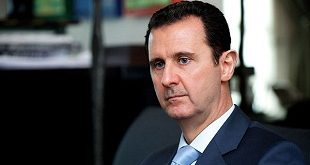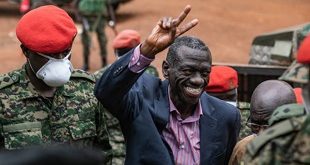
By Haggai Matsiko
Invisible Children’s ‘Kony 2012’ viral campaign draws unfriendly fire
If videos would kill, Lord’s Resistance Army rebel leader Joseph Kony would be dead by now. Within just four days, a video—Kony2012— that aims at having him arrested by the end of this year, had gone viral with its viewership hitting the highs of over 60 million people, and counting. It was released by film maker and Invisible Children co-founder, Jason Russell, on Feb.5.
Riding on a loaded campaign machine by the San Diego headquartered group, the video has spread on Face Book, Tumblr, and Twitter, and dominated coverage in all mainstream media and other social media. The group mainly followed by tens of thousands of youths ensured the video is shared all over all social networks and in just two days had caught the attention of international celebrities.
Oprah Winfrey and Justin Bieber with 10 million and 18 million followers on twitter respectively among many celebrities boosted the video’s viewership. Even U.S President Barack Obama is reported to have congratulated the people who mobilised to promote the video.
In the film, Russell, who is the film’s director and narrator, calls on the viewers of the 28 minute documentary to join him in a campaign to “make Kony famous”.

His goal is to make Kony become everyone’s target and eventually get him captured. Russell evokes emotion by describing his friendship with one of Kony’s victims, Jacob, and then shares a compelling story about his encounter with Kony. Russell also uses his about 3-year old son Gavin Danger and Jacob to make the point that Kony is “a bad guy” who must be captured. “We will stop them [LRA],” he pledges to Jacob.
He suggests a social media strategy that includes getting people to enlist celebrities and call up top policy makers in America and others to help stamp up the campaign against Kony.
Russell says his campaign is intended to keep pressure on Ugandan government officials and United States advisers who are trying to find and arrest Kony.
“In order for Kony to be arrested this year, the Ugandan military has to find him. In order for them to find him, they need the technology and training to find him in the vast jungle. That’s where the American advisors come in. But in order for the American advisors to be there, the US government has to deploy them. They’ve done that, but if the government doesn’t believe that the people care about arresting Kony, the mission will be canceled. In order for people to care, they have to know, and they will only know if Kony’s name is everywhere,” Russell says in the documentary.
Backlash
But as the video spreads, it has generated an equally controversial backlash.
Critics attack its producers of fronting a simplistic approach of ending the war that is premised on arresting and trying Kony.
Politicians from Kony’s Ground Zero, the northern Uganda region, like former leader of the opposition in Parliament Ogenga Latigo, have dismissed the Invisible Children’s efforts as “too narrow to be allowed to define the popular understanding of the LRA insurgency”.
But others like Human Rights Watch’s Maria Burnett, say the video has helped draw attention to an issue the rights group has long been working on.
Some view the video as the usual “American supremacy” approach as it touts a solution from the U.S to an African problem.
Norbert Mao, another politician from northern Uganda and leader of the opposition Democratic Party, is interviewed in the video. He criticises Russell for ignoring the issues that he raised about the atrocities committed by the Ugandan army.
In the 28 minute documentary, for instance, at no point does Russell talk about how the Ugandan army gallantly fought Kony and kicked him out of the country.
Instead, Russell’s video emphasises the role of the Obama administration that only recently sent 100 security advisers to assist in hunting for Kony.
“After eight years of work, the government finally heard us and in the October of 2011, the government sent 100 American advisors into Central Africa to assist the Ugandan army in arresting Kony and stopping the LRA,” Russell says in the movie.
To stress his point, he quotes a Dec.2 2011, radio report from CAR showing that Kony was already tensed just a month after learning that the U.S or “the great power”, as Russell calls it, was hunting him.
“A 14-year old boy who just escaped reports that “Joseph Kony now knows of the United State’s plan to stop the LRA and he is going to change his tactics to avoid capture, now that the great power is after him,” reads the text in Kony 2012.
This, Russell’s critics say, is the usual American self-hype. The 100 advisors came in at the tail end of the war; at a time when Kony has been reduced to mere hundreds by the UPDF. But nevertheless, in the movie, the sending of these advisors seems to mark the turning point of the fight against him. It is obvious that if Kony is either arrested or killed tomorrow, the documentary maker, Russell, the organisation, Invisible Children, and America will not be embarrassed to claim the victory.
Observers say that although it is critical to capture Kony, Russell’s video is out of touch with the reality on the ground. Part of it was shot when one of the main characters, Jacob was 13, and on the run for his life. In the movie he is seen crying and wishing he “would rather die, than wait to be abducted.”
But today, eight years later, Jacob is at Makerere University pursuing a degree in law. Critics say that Jacob shows that the children then under threat from Kony have since moved on and that Russell’s narration could imply that there are as many as 30,000 child soldiers in Kony’s army today. Yet the LRA has over the years been reduced to a few hundreds.
The problem in northern Uganda is no longer Kony but resettlement and rehabilitation of his former victims, critics argue.
Diversionary
Unfortunately for the Invisible Children, the video has also re-awakened sharp barbs against how the organization spends its money with many critics attacking it for spending just a paltry 32 percent on direct service delivery to people of northern Uganda and the rest on their salaries, allowances, air tickets and other comforts.
But Russell told CNN that the group is not a traditional organisation that does amazing work on the ground.
“We work outside the traditional box of what you think about charity,” he told CNN. “We have three Ms: the movie, which is going viral … the movement, which is actual volunteers around the world … and the mission — to stop Kony and rehab the war-affected children through education, reintegration and building jobs for the community,” said Russell.
However, critics are concerned that Russell’s new campaign that is already attracting thousands of dollars in donations with their call to action of having people sign its pledge, get the Kony 2012 bracelet and action kit (only $30), and sign up to donate, is likely to draw resources away from more effective charity organisations while reinforcing the idea that Westerners have to come to the rescue of poor, “helpless Africans”.
Kony 2012 comes shortly after the premiering of another American movie, apparently based on a true story, The Machine Gun Preacher, in Uganda. In the movie, Gerard Butler, the main actor plays Sam Childers, a hard-drinking, drug-abusing biker thug from Minnesota who got saved in the late 1990s and flew out to Uganda on a charity mission.
While here, Childers becomes an aid worker who builds homes for families displaced by the LRA. The vigilante later moves north into Sudan, where he builds an orphanage and leads armed raids against the LRA, in an attempt to rescue the children the LRA is trafficking into armed conflict and sex slavery.
One thing is striking about the two movies; touched by the plight of these children and frustrated that no one seems to be doing much to stop the LRA, the actors in both movies stamp up a campaign drawing support from mainly the U.S to rescue the poor and suffering Africans against Kony.
The difference is that while Butler takes on a gun himself, Russell has used his video to call on mainly the U.S “the great” power to end the Kony war. Some Africanists do not like that
 The Independent Uganda: You get the Truth we Pay the Price
The Independent Uganda: You get the Truth we Pay the Price


